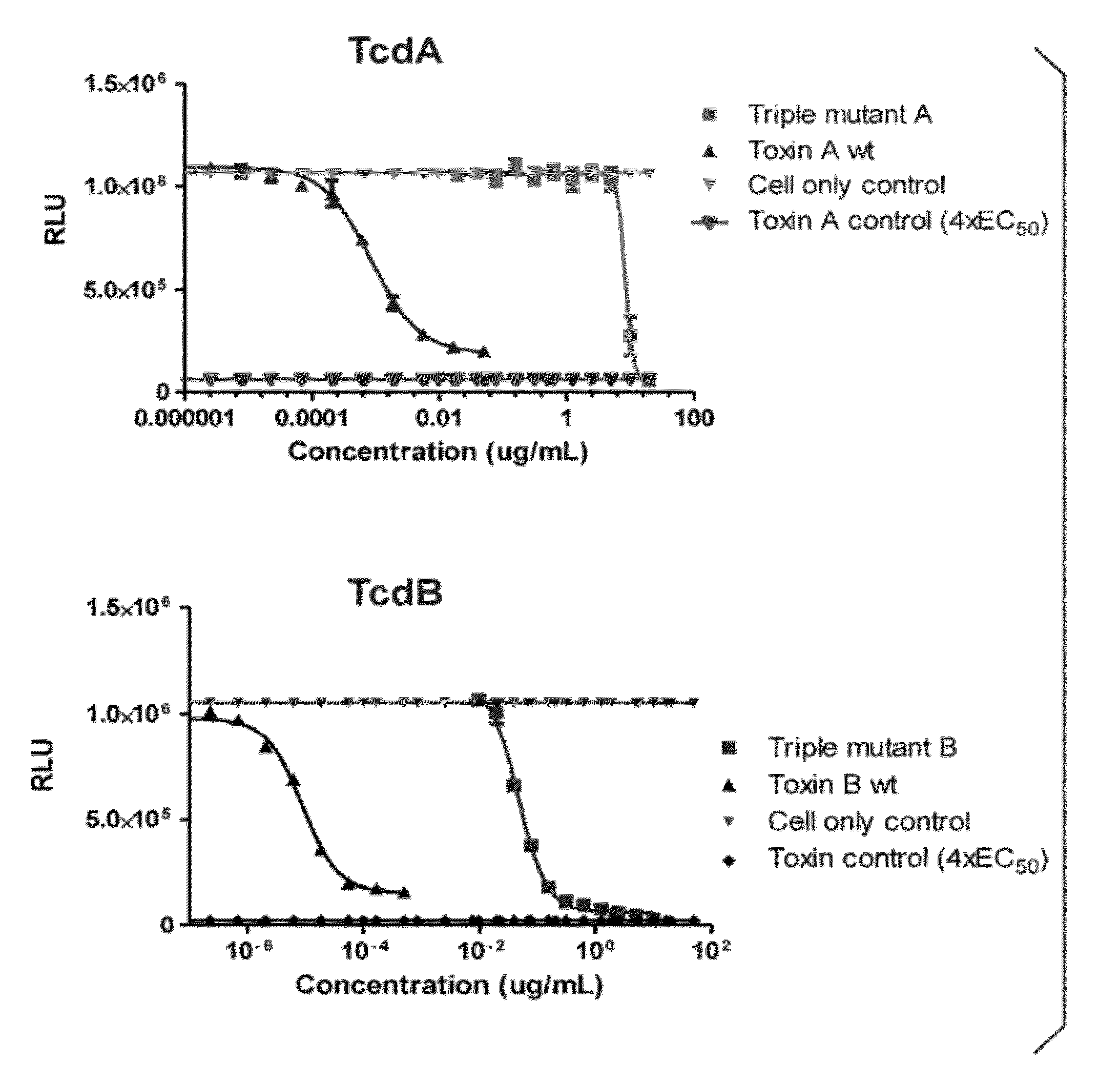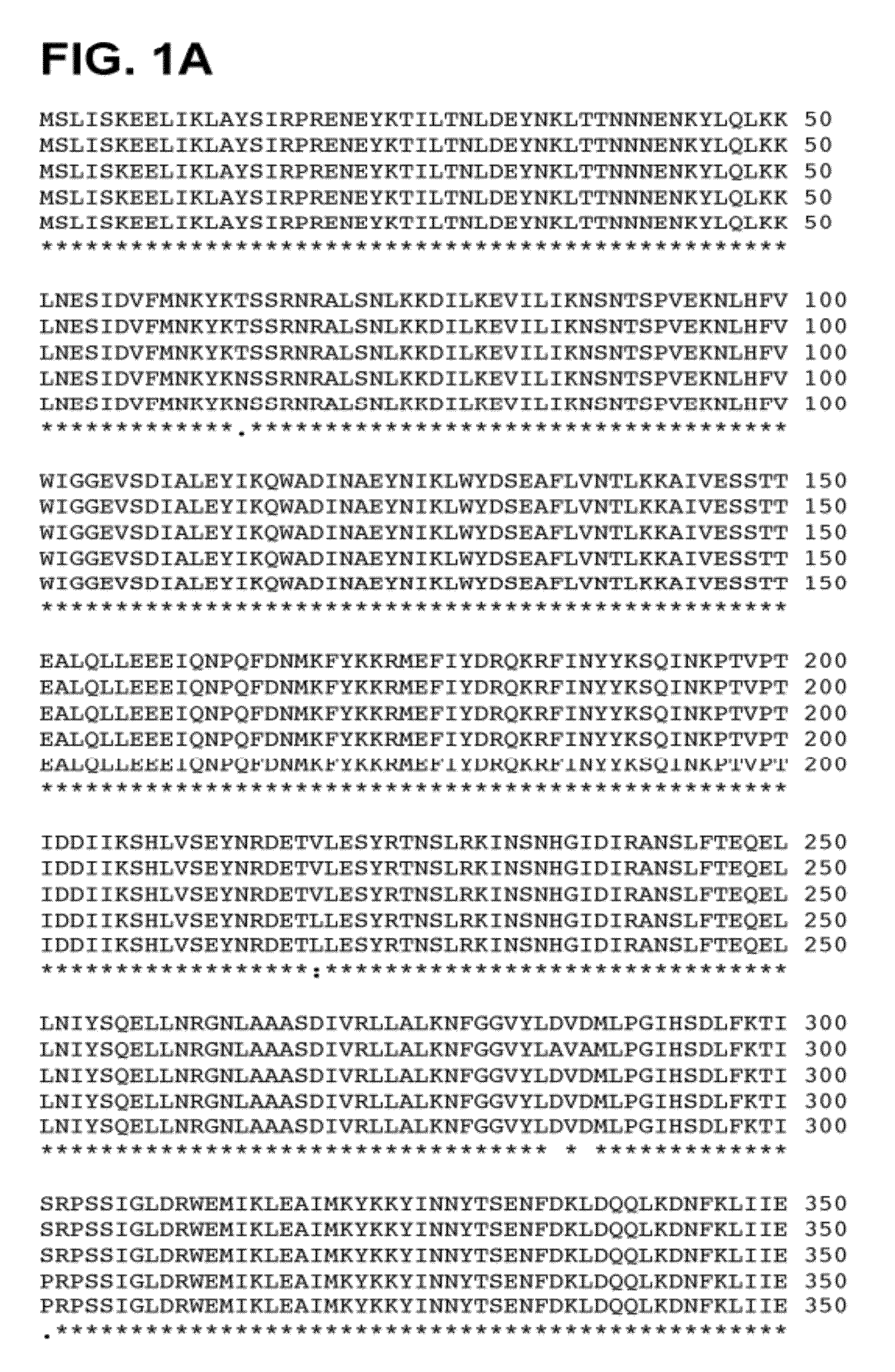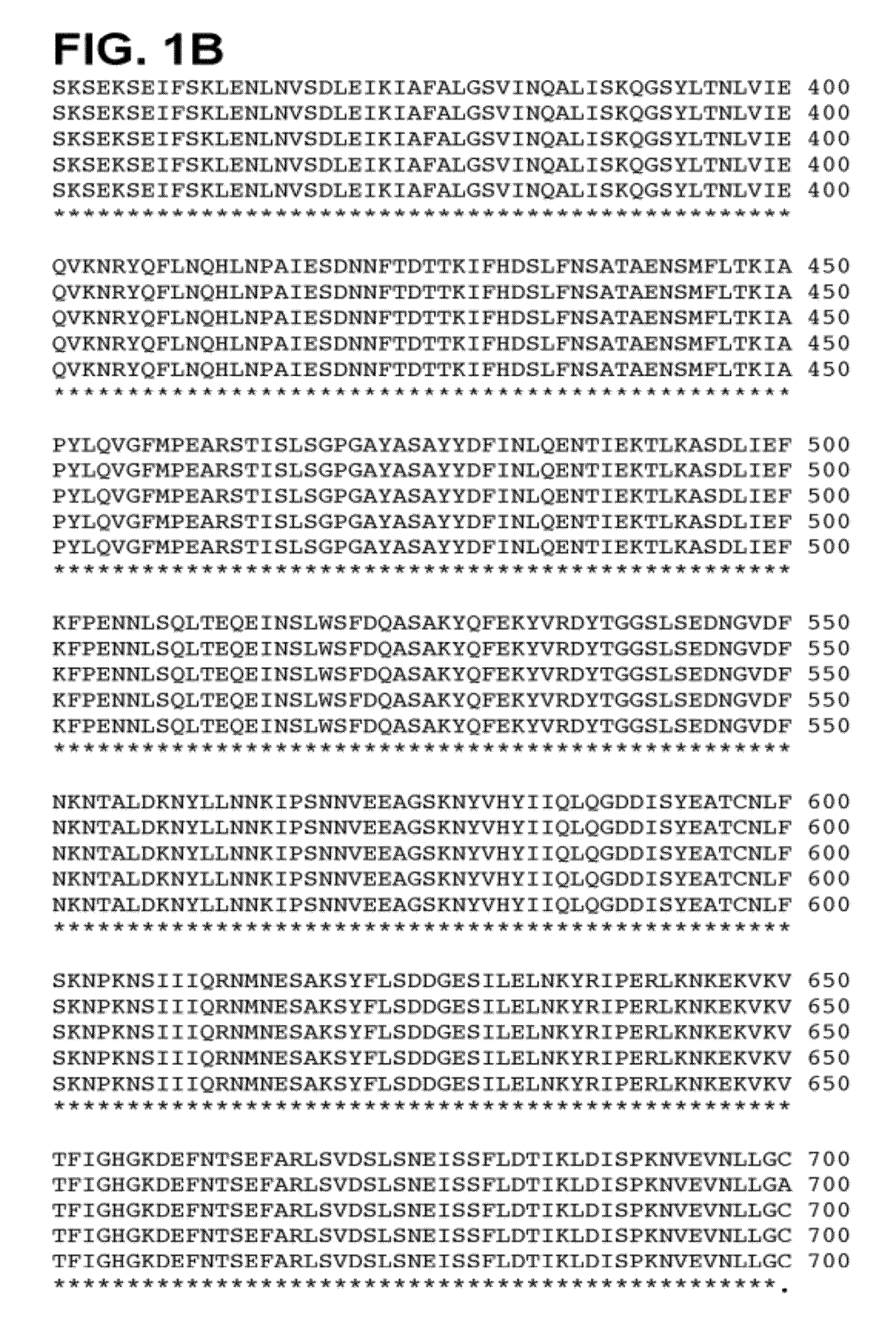Compositions relating to a mutant Clostridium difficile toxin and methods thereof
a technology of clostridium difficile and toxins, which is applied in the field of compositions concerning mutant clostridium difficile toxins, can solve the problems of significant challenge in the treatment of recurrences, and achieve the effect of reducing cytotoxicity
- Summary
- Abstract
- Description
- Claims
- Application Information
AI Technical Summary
Benefits of technology
Problems solved by technology
Method used
Image
Examples
example 1
Identification of Toxin-Negative C. difficile Strains
[0555]To identify C. difficile strains lacking toxin (A and B) genes and toxin expression, 13 C. difficile strains were tested. Culture media of 13 C. difficile strains were tested by ELISA for toxin A. Seven strains expressed toxin A: C. difficile 14797-2, C. difficile 630, C. difficile BDMS, C. difficile W1194, C. difficile 870, C. difficile 1253, and C. difficile 2149. See FIG. 3.
[0556]Six strains did not express toxin A and lacked the entire pathogenicity locus: C. difficile 1351 (ATCC 43593™), C. difficile 3232 (ATCC BAA-1801 ™), C. difficile 7322 (ATCC 43601™), C. difficile 5036 (ATCC 43603™), C. difficile 4811 (4 ATCC 3602™), and C. difficile VPI 11186 (ATCC 700057™). VPI 11186 was selected based upon its effectiveness to take up plasmid DNA by conjugation.
[0557]The same 13 strains were tested in a multiplex PCR assay using primers outside of the pathogenicity locus (PaLoc; Braun et al., Gene. 1996 Nov. 28; 181(1-2):29-38.)...
example 2
Inactivation of Sporulation Pathway in C. difficile VPI 11186
[0558]Knocking-out the spore-forming function of the C. difficile production strain facilitates large scale fermentation in a safe manufacturing environment. The ClosTron system was used to create an asporogenic C. difficile strain. See Heap et al., J Microbiol Methods. 2009 July; 78(1):79-85. The ClosTron system allows targeted gene inactivation with a group II intron for site directed insertional inactivation of a spo0A1 clostridial gene. The toxin-minus production strain VPI11186 was subjected to sporulation inactivation by the ClosTron technology. Erythromycin resistant mutants were selected and the presence of the insertional cassette was confirmed by PCR (not shown). The inability of two independent clones to form spores was confirmed.
example 3
Genetic Modification of Toxin A and B Genes to Inactivate Cytotoxicity Function
[0559]Full-length mutant toxins A and B open reading frames (ORFs) based on strain 630Δ genome sequences were designed for custom synthesis at Blue Heron Biotech. See, for example, SEQ ID NOs: 9-14. The active site for the glucosyltransferase activity responsible for cellular toxicity was altered by two allelic substitutions: D285A / D287A (see SEQ ID NO: 3) for toxin A, and D286A / D288A (see SEQ ID NO: 5) for toxin B. Two nucleotides were mutated in each aspartate (D) codon to create the codon for alanine (A). See, for example, SEQ ID NOs: 9-14. In addition, a pair of vectors expressing mutant toxins lacking cysteine residues was constructed following custom synthesis at Blue Heron Biotech. Seven cysteine residues from mutant toxin A and 9 cysteine residues from mutant toxin B were replaced with alanine. The substitutions include catalytic cysteines of the A and B toxin autocatalytic protease. Also, silent ...
PUM
 Login to View More
Login to View More Abstract
Description
Claims
Application Information
 Login to View More
Login to View More - R&D
- Intellectual Property
- Life Sciences
- Materials
- Tech Scout
- Unparalleled Data Quality
- Higher Quality Content
- 60% Fewer Hallucinations
Browse by: Latest US Patents, China's latest patents, Technical Efficacy Thesaurus, Application Domain, Technology Topic, Popular Technical Reports.
© 2025 PatSnap. All rights reserved.Legal|Privacy policy|Modern Slavery Act Transparency Statement|Sitemap|About US| Contact US: help@patsnap.com



